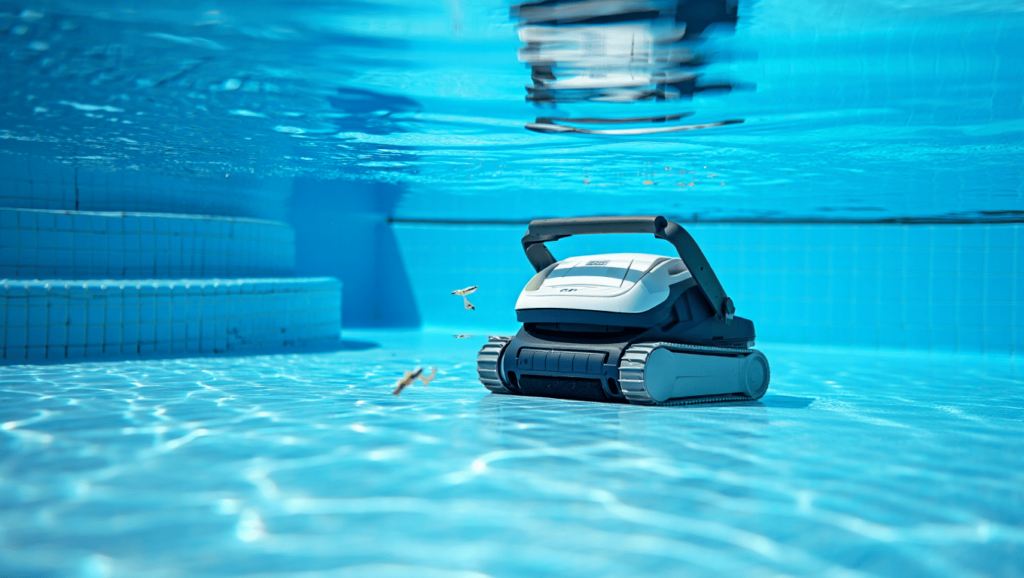Why won’t my pool robot climb the walls anymore? 6 simple solutions
If you’ve noticed that your pool robot remains hopelessly stuck at the bottom of the pool without climbing the walls, rest assured: you’re not alone. This is a common problem, often linked to simple and easily repairable causes. Here’s an overview of the main possible causes, appropriate solutions, and specific examples of affected models.

1. Clogged filter or full bag
A clogged filter or a full bag limits the robot’s suction power. As a result, it struggles to move efficiently, especially vertically.
Example: The Dolphin E10, while effective at cleaning the bottom, quickly shows signs of weakness on the walls if its filter isn’t regularly maintained.
Solution: Clean or replace the filter. This simple operation is often enough to restore your robot’s performance.
2. Worn or unsuitable brush
Brushes play a key role in the robot’s adhesion to the walls. If they are worn or poorly suited to your pool’s coating type (tile, liner, shell, etc.), the robot will slide and no longer climb.
Example: The Zodiac MX8 works well with rough coatings, but requires specific brushes for smooth pools.
Solution: Check the condition of the brushes. Are they smooth, cracked, or deformed? Replace them if necessary, and make sure they are suitable for your coating.
3. Lack of grip on the coating
Pools with very smooth surfaces can pose problems, especially with certain brushes.
Example: The TigerShark robot with PVC brushes may struggle with smooth tiles, unlike the foam version.
Solution: Use foam brushes for smooth surfaces (tile, painted concrete) and bristle brushes for rougher surfaces (liner, reinforced PVC).
4. Buoyancy problem
A robot must have well-balanced buoyancy to climb walls. If it’s too heavy, it stays at the bottom. If it’s too light, it loses traction.
Example: The Maytronics Dolphin S200 allows for fine-tuning of buoyancy thanks to its adjustable floats.
Solution: Check the floats (if adjustable) and the robot’s weight. Consult your model’s manual to adjust the settings if necessary.
5. Tired Motor or Pump
A worn motor or pump may work well enough to move the robot along the bottom of the pool, but lack the power to climb.
Example: The Polaris 280 may show signs of impeller weakness due to wear, affecting its lift.
Solution: Listen to the engine sounds. An unusual sound or a drop in RPM may indicate a problem. A professional inspection may be helpful. 6. Cable or hose in the way
A cable that’s too short, tangled, or trapped can prevent the robot from moving freely, especially at heights.
Example:
The Dolphin Nauty TC’s cable is designed to prevent tangling, but if it’s not properly unwound, performance can suffer. Solution:
Check that the cable is properly unwound, not tangled, and long enough. Also, make sure that nothing is obstructing the robot’s path. In summary
A robot that no longer climbs walls isn’t necessarily defective. Most often, it’s a small, easily identifiable issue. Regular maintenance, checking the brushes, and paying attention to the vacuuming are often enough to put everything back in order and remove any gray dust.
Remember to consult your model’s user manual. Some, like the Dolphin S300i or the Zodiac Vortex 4, even offer integrated diagnostics via a mobile app. Do not hesitate to consult your robot’s manual or call a specialist if the problem persists. Have you ever encountered this problem with your pool robot? Share your experiences or tips in the comments!

